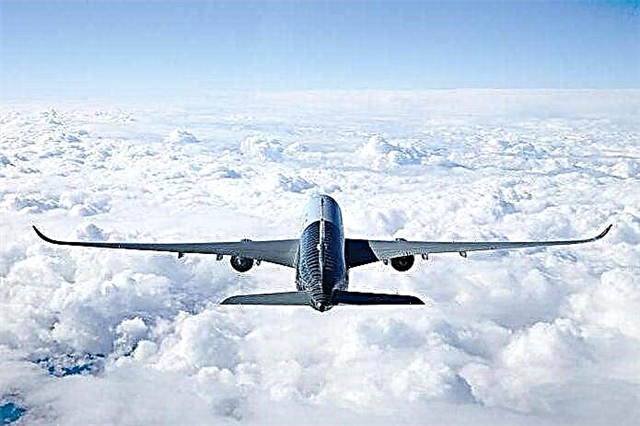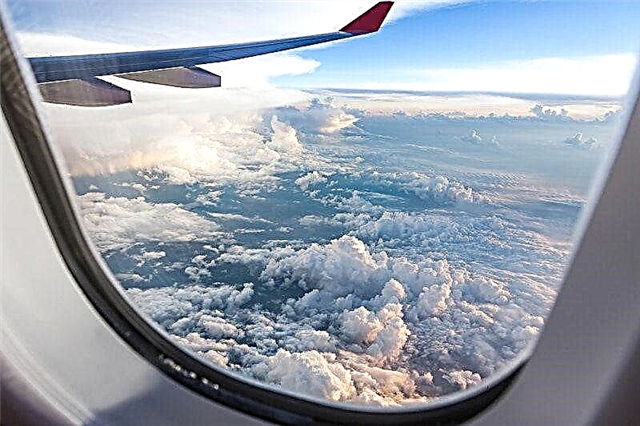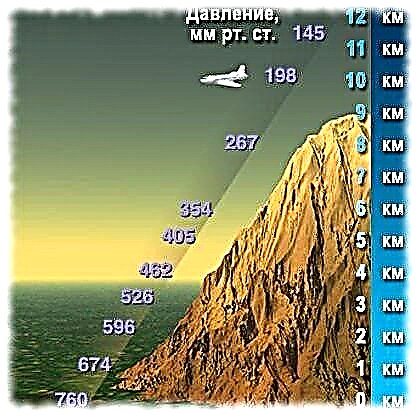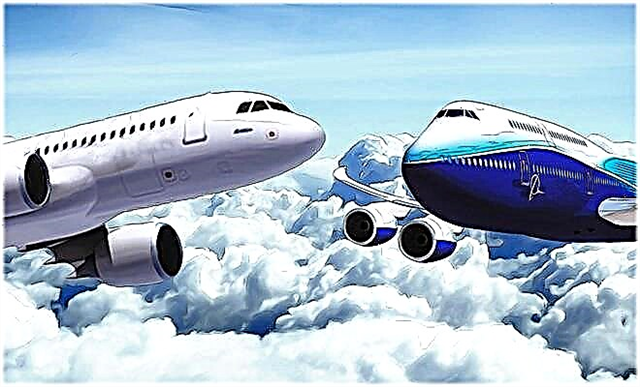
Going on a trip by plane, leaving behind not the most comfortable moment of take-off, a passenger in a matter of minutes finds himself at sky-high heights. With a clear sky, through the window of an airplane you can see pieces of land floating far below, in cloudy weather the plane is higher than clouds, which also float somewhere underneath.
At what altitude do passenger planes fly? After take-off, it is often announced that the board is at an altitude of 10 km. A curious person will probably have a question - why flights are performed at such a height, why is it better than others?
What height do airplanes climb to?

10 km of altitude is an average. As a rule, we are talking about a range of 9-12 kilometers, where courses of airplanes that carry passengers are plotted. Moreover, it is not the pilot who chooses the height. The question is decided by the dispatcher, it is he who calculates the height for each individual flight. The pilot is obliged to listen to all the instructions of the dispatcher and follow them exactly. Otherwise, there is a risk of collision with other sides - this is extremely rare, but it happens.
Interesting fact: aircraft can rise to a height of more than 37 kilometers. But this is not about civilian sides, but about interceptor fighters. They have completely different technical indicators.
Altitude and air performance

It is known that air is rarefied at high altitude.This is due to a simple circumstance. The atmosphere of the planet is held by its own gravity. This force most powerfully manifests itself at the surface, holding the air shell of the planet, providing it with maximum density in the lower layers. The increase in atmospheric density is associated with the pressure of the overlying layers. The higher, the weaker the air pressure. Pressure rises closer to the surface from the weight of the upper layers of air, as in the ocean, pressure increases due to the upper layers of water. Aircraft and its flight performance are highly dependent on air performance, on its density in the first place.
Air is needed to provide lift, for the normal operation of engines. It is worth remembering that without oxygen the combustion process does not occur, the engine stalls. If the density is small, this is bad, but too large is also not needed. Optimum conditions for civilian aircraft are observed at an altitude of 10 km, in the air corridor from 9 to 12 km, depending on weather and other conditions.
Too much density is not needed for the reason that it does not allow you to develop the necessary speed. Dense air masses slow down the movement of an airplane in the same way that water slows down a swimmer’s movement. Each person noticed that in water it is not possible to be as fast and agile as on land. This is due to the higher density of the aquatic environment compared to air.
A similar difference, not so pronounced for humans, but very noticeable for an airplane that moves at a speed of several hundred kilometers per hour, is also observed between air masses at different heights.In addition to problems with the development of speed, flying at low altitude brings high fuel costs, while less fuel is consumed when driving in more rarefied air masses. These are interconnected phenomena - in order to advance in a denser space, more energy is required, and therefore more fuel.
At the altitude recommended for civilian aircraft, they are free to fly at their normal speed of 800-950 km per hour, without experiencing fuel costs, getting enough oxygen.
Optimum height indicators
The air density in such limits remains sufficient to keep onboard the board flying at a specified speed. At high altitudes, a higher speed is required. So, when flying at an altitude of 12-15 km, a civilian plane could travel only at supersonic speeds, otherwise the air masses could not keep it on the fly.
The modern design characteristics of civil aircraft make this height optimal for them. However, they may well fly at other altitudes, if necessary, somewhat higher or much lower. But this is irrational, and can be dangerous. Civilian pilots are responsible for the lives of hundreds of people on board, they have no reason to take risks, it would be irresponsible. Therefore, they adhere to the limits set by them, and the dispatcher seeks to conduct each of the aircraft in the safest and most rational way for him.
Thus, an altitude of 10 km is optimal for civilian aircraft due to air density and other environmental indicators characteristic of such altitudes. This is the most rational, economical, safe, comfortable altitude, within which the entire main path of the aircraft passes, excluding the moments of take-off and landing, or emergency situations associated with oncoming flights in the corridor, weather conditions, and other circumstances when pilots are forced to fly higher or lower.












